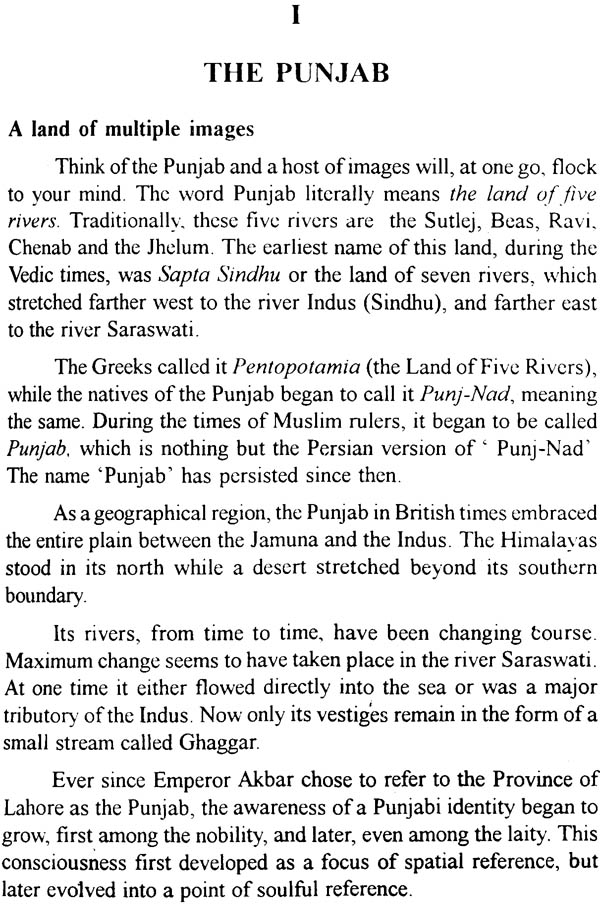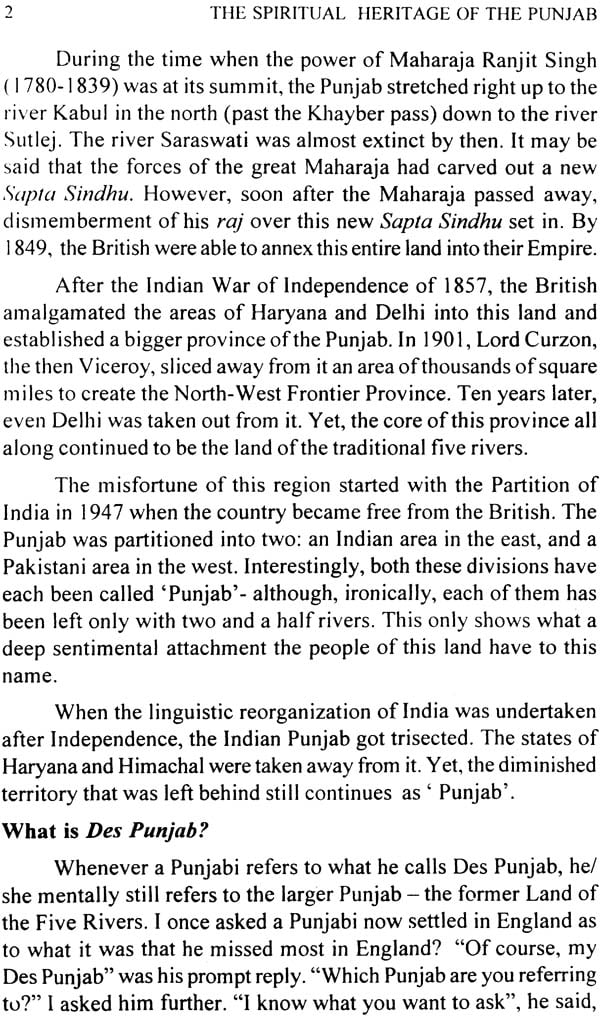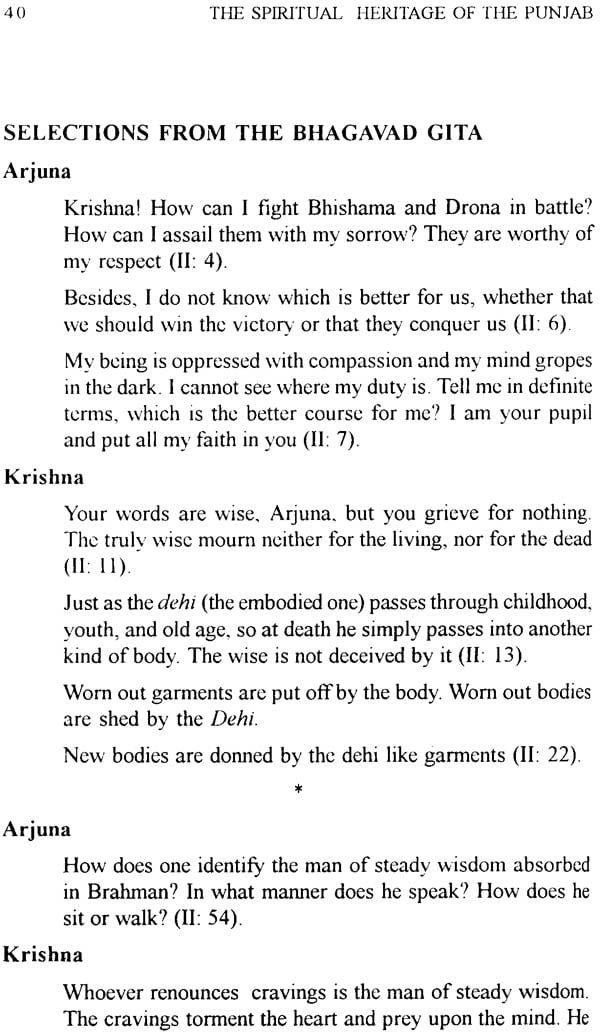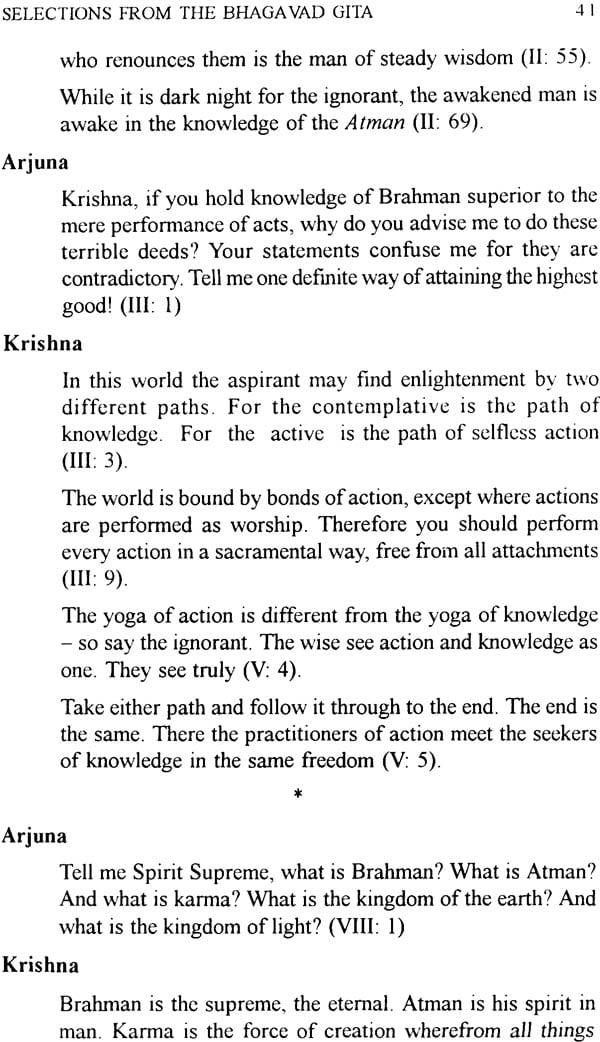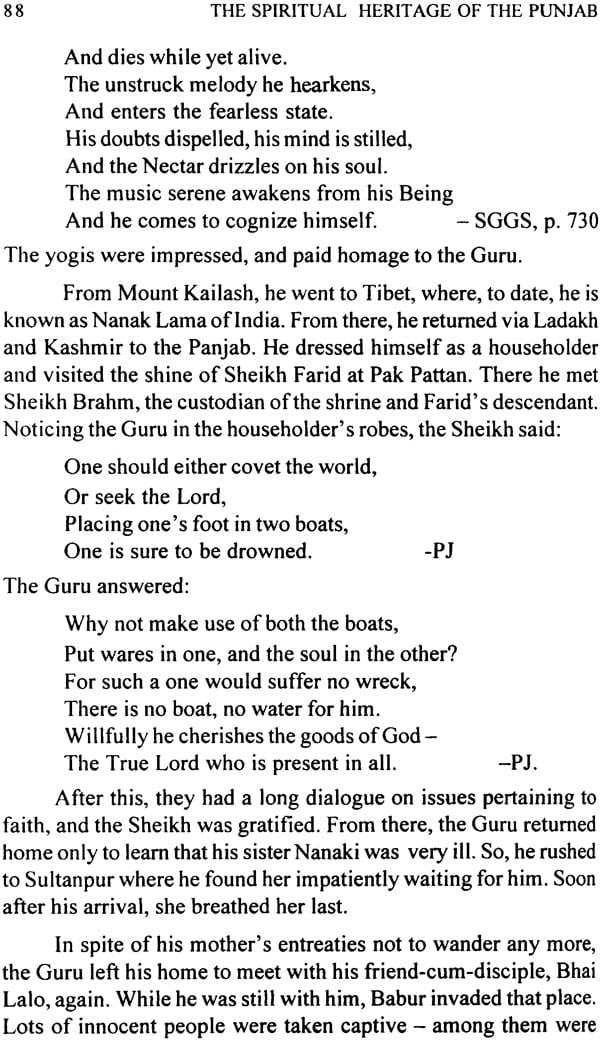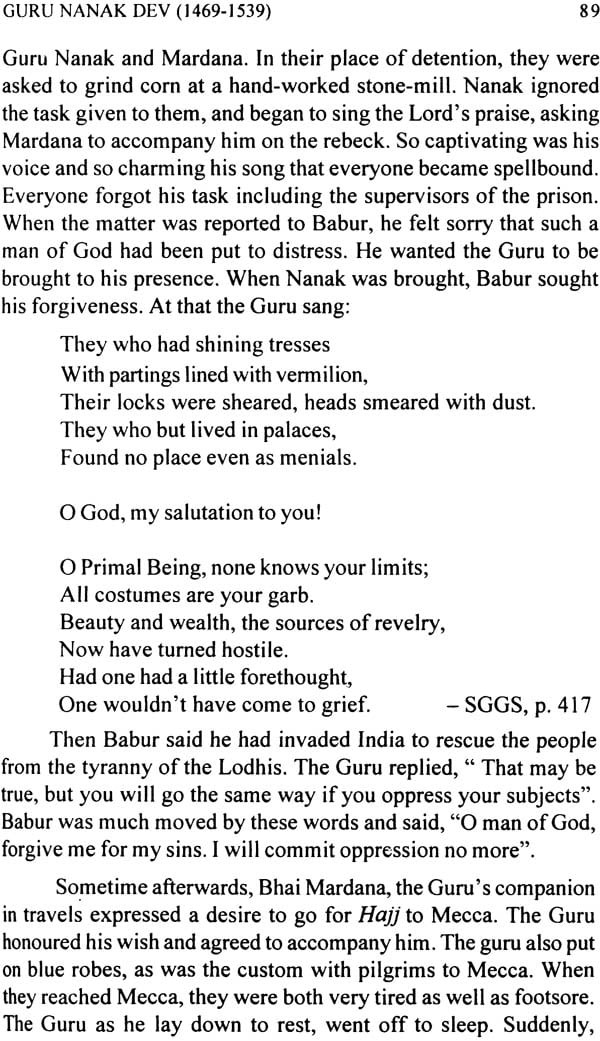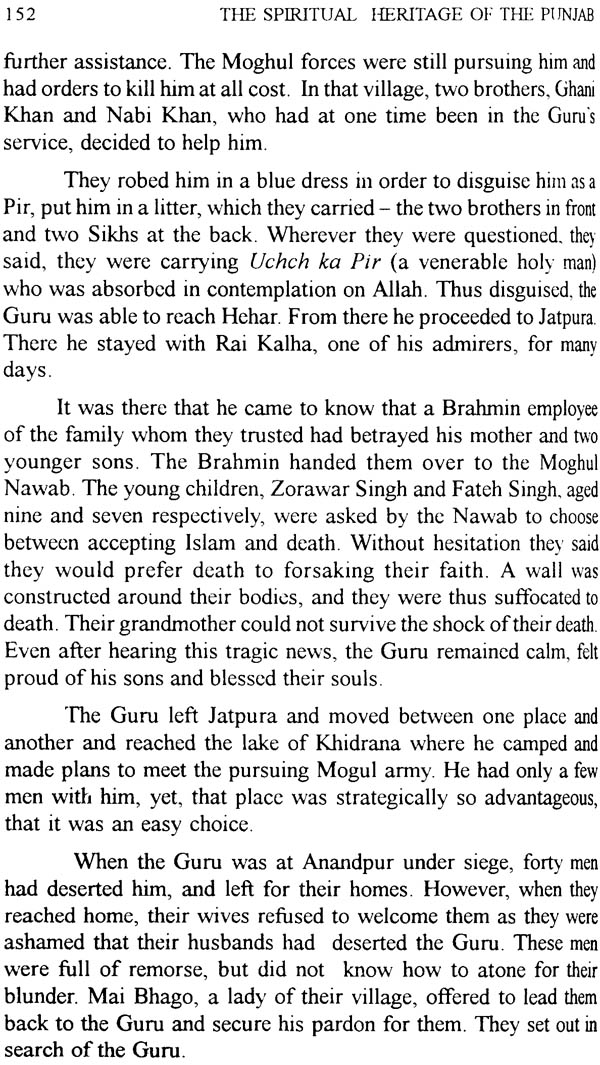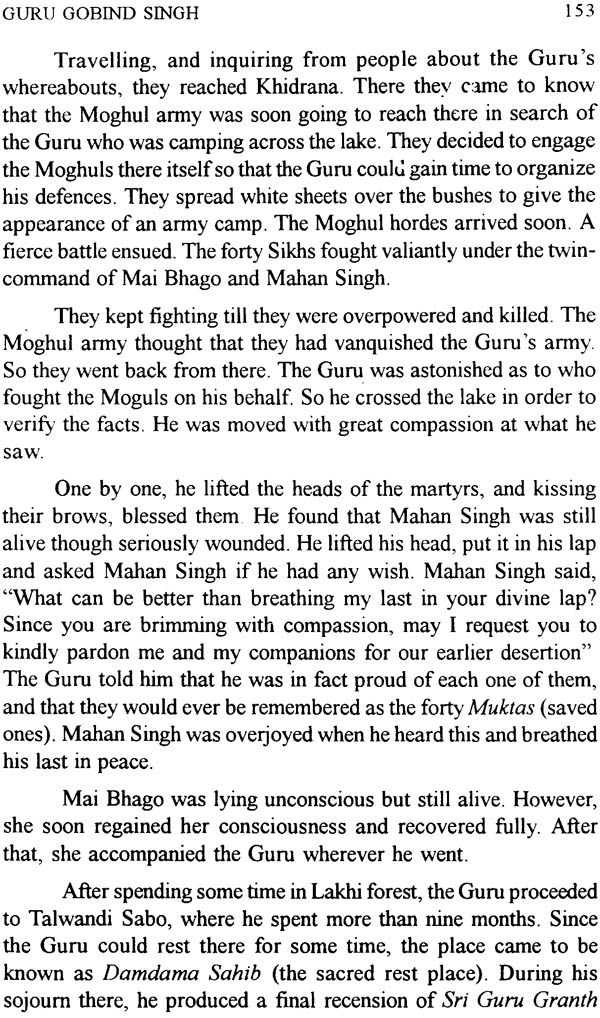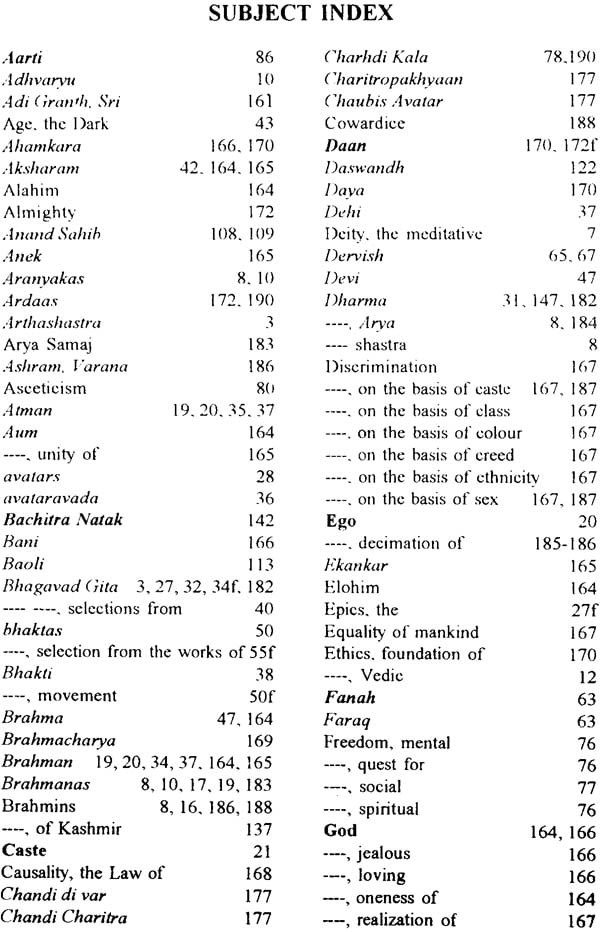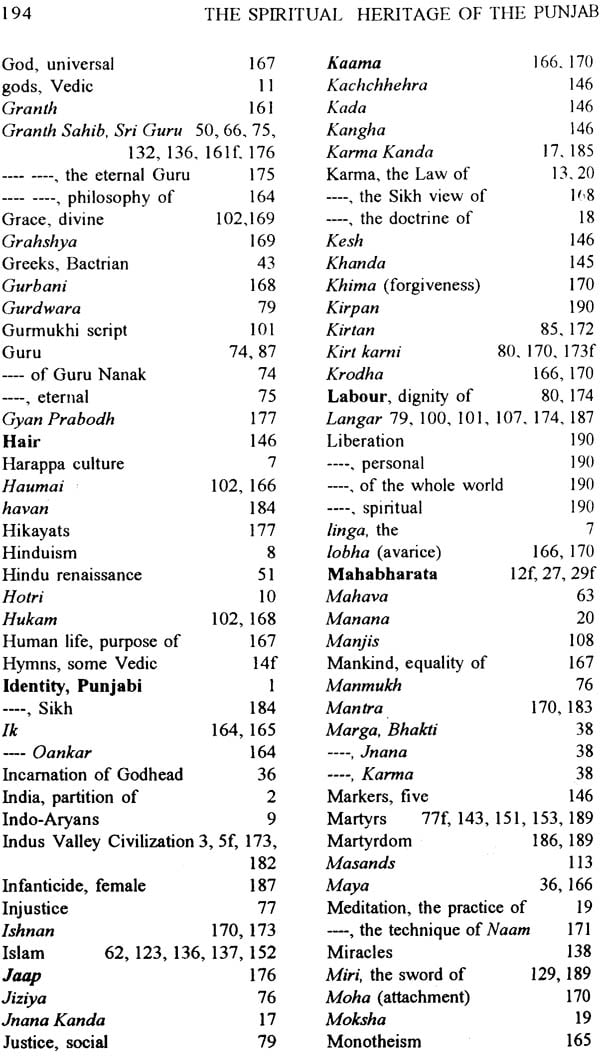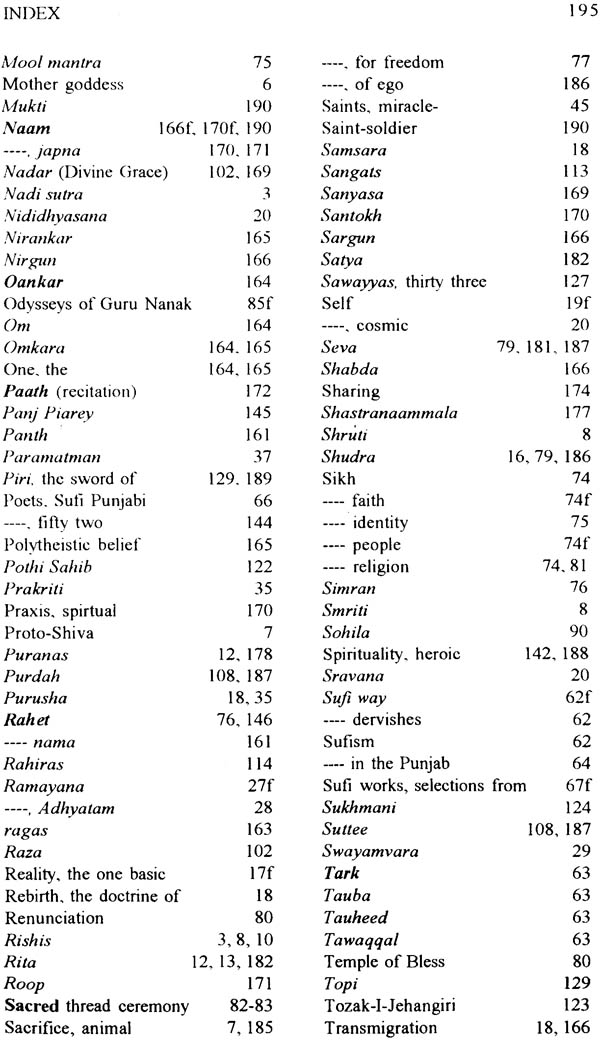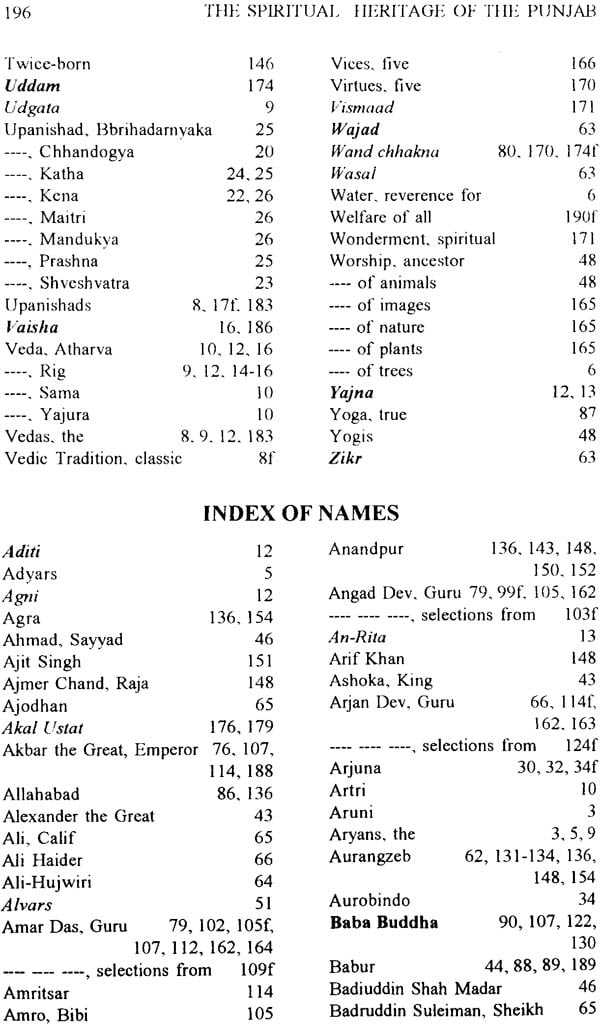
The Spiritual Heritage of The Punjab
Book Specification
| Item Code: | NAG143 |
| Author: | Jaswant Singh Neki |
| Publisher: | Guru Nanak Dev University, Amritsar |
| Language: | English |
| Edition: | 2009 |
| ISBN: | 8177700057 |
| Pages: | 211 (10 B/W Illustrations with 2 Maps) |
| Cover: | Hardcover |
| Other Details | 8.5 inch X 6.0 inch |
| Weight | 370 gm |
Book Description
Spirituality means being related to spirit in contrast to the tangible or material. Its sublime reaches pertain to the relationship between man and God.
Although the spiritual urge is present in man everywhere, it seems safe to say that there is something special about the genius of the Punjab. The Punjab's spiritual heritage is not only among the most ancient, it is also among the most varied.
It has been said, 'Those born in the Punjab ever face new expeditions'. This land, for millennia, has been the gateway for an almost unceasing series of invasions. How very devastating must have the effect of such invasions been is borne out by the account recorded by Guru Nanak Dev of one such invasion, that of Babur in 1521:
Where are the games, the horses, the stables,
Where are the drums and the bugles?
Where are the sword-belts, where the chariots,
Where the uniforms scarlet?
Where are the mirrors and the beauteous faces,
I see them no more!
This world is Yours, You are its Master,
Just as You create, in an instant, so too You destroy,
And distribute wealth as You please.
Where are the houses, where their portals,
Where are the mansions and serais?
Where are the pretty brides lounging on the couches,
Seeing whom, folk lose their sleep?
Where are the betel leaves and their vendors,
Where are the harems? Like shadows all gone!
So many perished for the greed of wealth,
For the greed of gold disgraced.
Those whom the Creator does choose to destroy,
Of Virtues strips them first.
Hearing of Babur's invasion, divines
Prayed for the halt of his hordes.
Burnt he temples, and burnt he mansions
Princes he cut up, and cast to the winds.
Yet no divine could a miracle work,
And not a Mogul, by the mantras, was blinded.
Moguls and Pathans, fought they each other,
Clanged they swords in the battleground.
Moguls, fired their smoky guns,
And Pathans advanced their elephants.
Those whose licence was torn by the Lord,
They, sure, were destined to breathe their last:
Hindu and Muslim and Bhatti, Rajput
Women, disrobed, into pyres were thrown.
How did the poor souls pass their nights,
Whose husbands returned not home?
Yet it is in times of such distress that man becomes more inclined to matters of the spirit. Spirituality, in essence, is based largely on intuition and emotion and not on a purely rational attitude of mind. That is, perhaps, the reason why, although the Punjab has not been the soil where great philosophies sprouted, it certainly has been the soil that Yielded rich spiritual harvests.
The pre-Vedic, the Vedic, the Upanishadic, and the Pauranic ages were followed by a dark period of amorphous folk religion. This was terminated by a renaissance through Bhakti and Sufi influences. Finally, the flowering of the Sikh faith completed the outstanding landmarks of spiritual advancement of the Punjab. Each one of them deserves our reverential attention.
An attempt has been made in this book to provide the essential historical background of these developments along with a consideration of the spiritual insights contributed by them severally. While doing so, the argument has been illustrated with selections from the relevant source materials. The quotations from Sri Guru Granth Sahib and other Sikh sources as well as from the Sufi poets have been rendered into English by the author himself. Effort has been made to preserve both the spirit of the message as well as its poetic quality as far as was possible. For the translation of quotations from Sanskrit sources, the author had to rely on the Hindi Bhashyas as well as some available English translations.
Hopefully, this little book will provide a modest introduction to the spiritual heritage of the Punjab.
| Introduction | i | |
| 1 | The Punjab | 1 |
| 2 | The Indus Valley Civilization | 5 |
| 3 | The Classic Vedic Tradition | 8 |
| Some Vedic Hymns | 14 | |
| 4 | Searching for the one basic reality | 17 |
| Some Upanishadic Sayings | 22 | |
| 5 | The Epics | 27 |
| 6 | The Bhagavad Gita | 34 |
| Selections from the Bhagavad Gita | 40 | |
| 7 | The Dark Age | 43 |
| 8 | The Bhakti Movement | 50 |
| Selections from the works of Bhaktas | 55 | |
| 9 | The Sufi way | 62 |
| Selections from Sufi Works | 67 | |
| 10 | The Sikh Faith and the Sikh People | 74 |
| 11 | Guru Nanak Dev | 85 |
| Selections from Guru Nanak Dev's Works | 92 | |
| 12 | Guru Angad Dev | 99 |
| Selections from Guru Angad Dev's Works | 103 | |
| 13 | Guru Amar Das | 105 |
| Selections from Guru Amar Das's Works | 109 | |
| 14 | Guru Ram Das | 112 |
| Selections from Guru Ram Das's Works | 115 | |
| 15 | Guru Arjan Dev | 120 |
| Selections from Guru Arjan Dev's Works | 124 | |
| 16 | Gurus Har Gobind, Har Rai and Har Krishan | 129 |
| Guru Har Gobind | 129 | |
| Guru Har Rai | 131 | |
| Guru Har Krishan | 132 | |
| 17 | Guru Tegh Bahadur | 135 |
| Selections from Guru Tegh Bahadur's Works | 139 | |
| 18 | Guru Gobind Singh | 142 |
| Selections from Guru Gobind Singh's Works | 156 | |
| 19 | Sri Guru Granth Sahib | 161 |
| 20 | The Dasam Granth | 176 |
| 21 | Epilogue | 182 |
